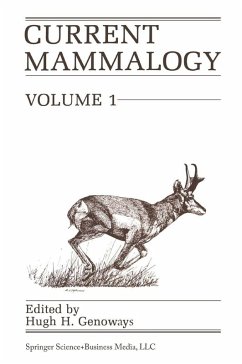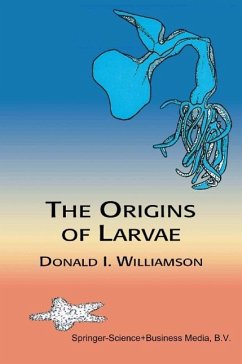
Human Origins and Environmental Backgrounds (eBook, PDF)

PAYBACK Punkte
80 °P sammeln!
Advances in fossil studies relating to the origin of Homo sapiens have strengthened the hypothesis that our direct ancestors originated on the African continent. Most researchers also agree that the time when prehumans diverged from the last common ancestor was in the early part of the Late Miocene epoch.Focus must now shift from determining the times and places of hominid origins to clarifying hominid evolutionary problems, such as the selective factors and acquisition processes of hominid bipedalism. In March of 2003, researchers from Africa, Europe, Japan and the United States convened in K...
Advances in fossil studies relating to the origin of Homo sapiens have strengthened the hypothesis that our direct ancestors originated on the African continent. Most researchers also agree that the time when prehumans diverged from the last common ancestor was in the early part of the Late Miocene epoch.
Focus must now shift from determining the times and places of hominid origins to clarifying hominid evolutionary problems, such as the selective factors and acquisition processes of hominid bipedalism. In March of 2003, researchers from Africa, Europe, Japan and the United States convened in Kyoto for a symposium on Human Origins and Environmental Backgrounds, an interdisciplinary effort to consider these evolutionary puzzles, to report current research and to exchange thoughts towards better understanding the relationship among environmental changes, adaptive mechanisms and human origins. This book is the result of that symposium, and includes a diverse and unique set of papers on topics such as hominid evolution, dispersal and morphology, and the origins of bipedalism.
Focus must now shift from determining the times and places of hominid origins to clarifying hominid evolutionary problems, such as the selective factors and acquisition processes of hominid bipedalism. In March of 2003, researchers from Africa, Europe, Japan and the United States convened in Kyoto for a symposium on Human Origins and Environmental Backgrounds, an interdisciplinary effort to consider these evolutionary puzzles, to report current research and to exchange thoughts towards better understanding the relationship among environmental changes, adaptive mechanisms and human origins. This book is the result of that symposium, and includes a diverse and unique set of papers on topics such as hominid evolution, dispersal and morphology, and the origins of bipedalism.
Dieser Download kann aus rechtlichen Gründen nur mit Rechnungsadresse in A, B, BG, CY, CZ, D, DK, EW, E, FIN, F, GR, HR, H, IRL, I, LT, L, LR, M, NL, PL, P, R, S, SLO, SK ausgeliefert werden.












